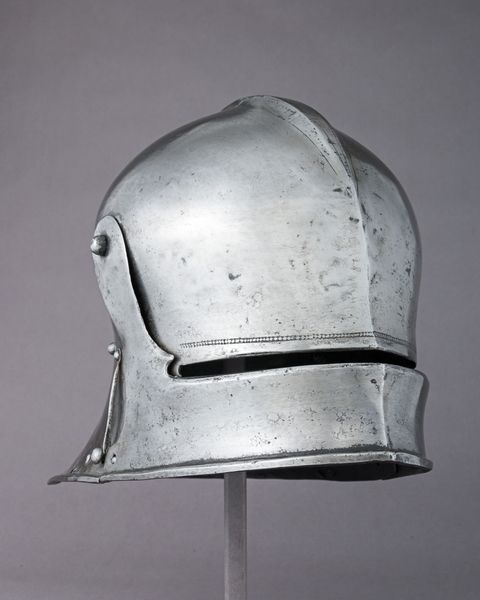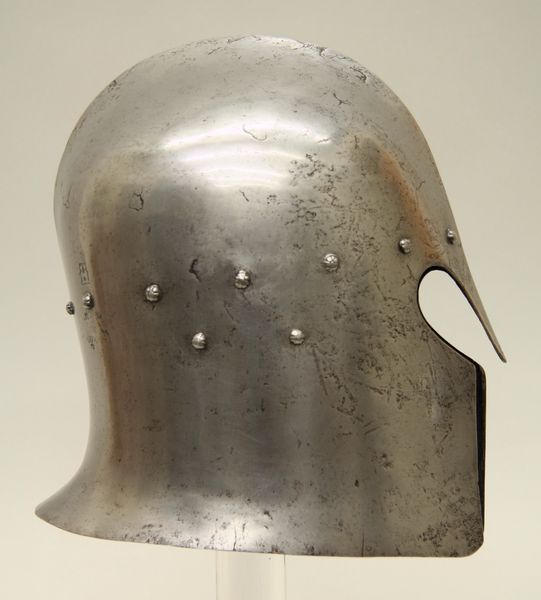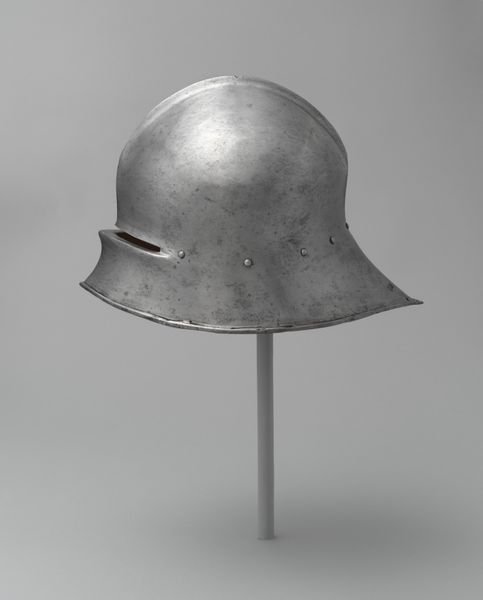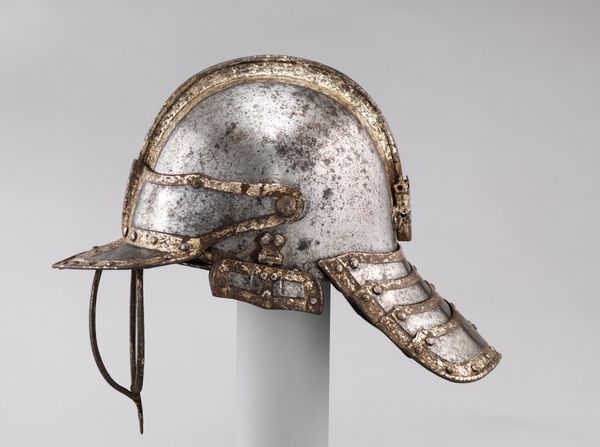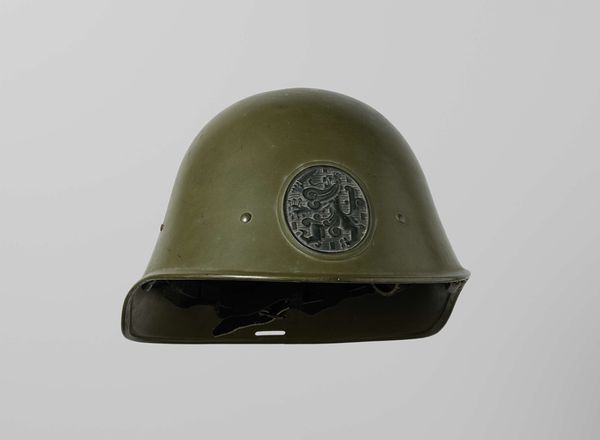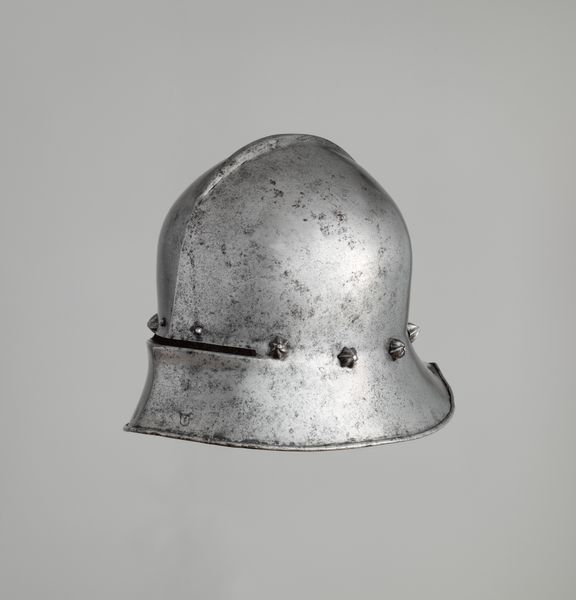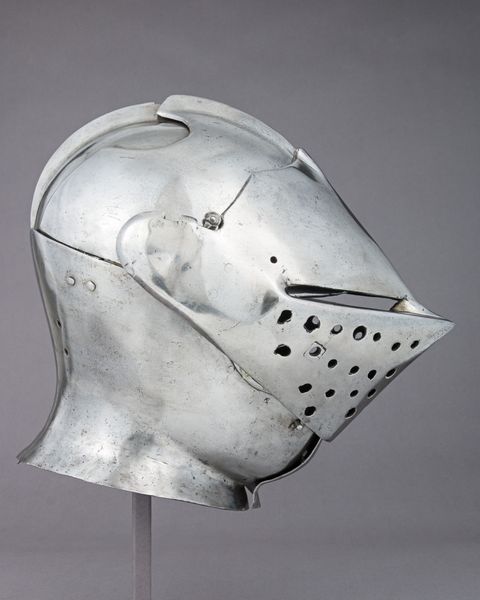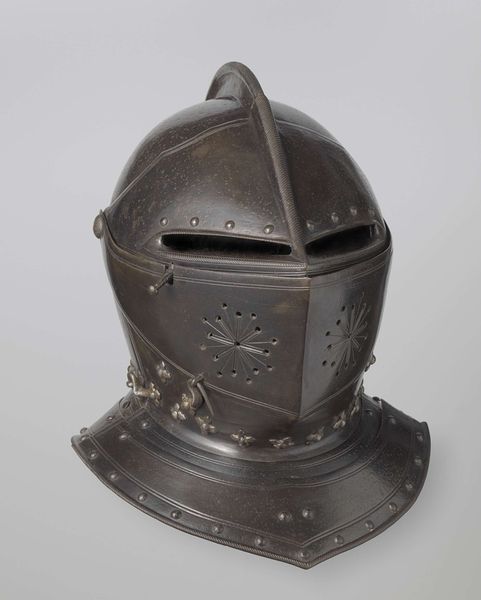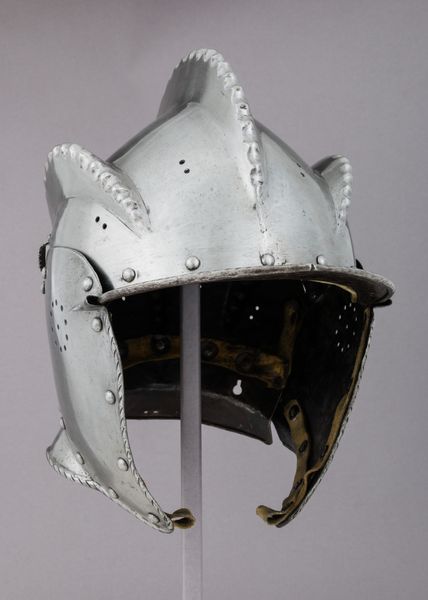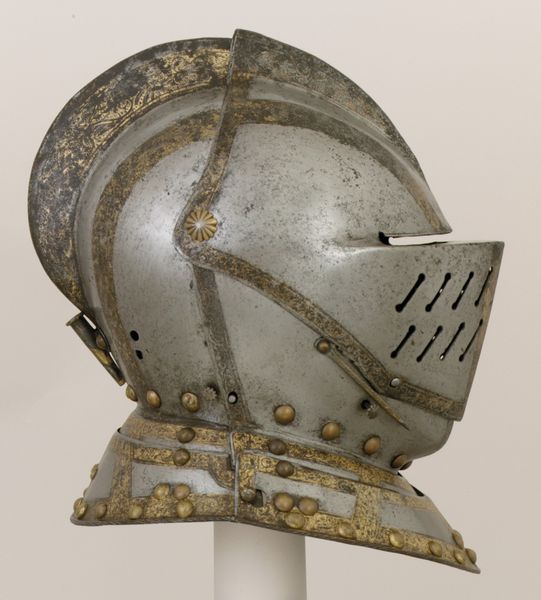
metal, sculpture
#
medieval
#
metal
#
sculpture
#
sculpture
#
armor
#
statue
Dimensions: H. 9 3/4 (24.8 cm); W. 8 in. (20.2 cm); D. 14 3/4 (37.4 cm); Wt. 7 lb. 2 oz. (3232 g)
Copyright: Public Domain
Curator: Welcome. Here we have a late 15th-century Sallet, part of a suit of armor, thought to be by Hans Blarer the Younger. Its gleaming steel, beautifully shaped. Editor: It looks surprisingly fragile. I mean, functional art—designed for protection, for violent confrontation—but rendered with a delicacy that belies its purpose. Curator: Observe the construction. The smoothly rounded skull piece transitions into the pronounced visor. The metalwork, each indentation and curve...it’s masterful. Editor: Considering this was crafted in an era rife with social upheaval and warfare, what narratives of power and protection do you think are embedded within the steel itself? Is it a status symbol, a tool of oppression, or perhaps something more complex? Curator: Both, I think. The aesthetics are intrinsic. The softly polished surface reflects light in a gentle gradient from the apex, creating a sense of harmonious balance. It exemplifies medieval artistry. Editor: But think about who would have worn this. How did its design—allowing limited visibility and movement—impact the wearer's psychological state, their perception of the battlefield? This era of "chivalry" upheld a code which seems contradictory from our vantage point, steeped in deeply entrenched misogyny. Curator: You raise intriguing questions. I believe the semiotic richness emerges from the arrangement of forms and how each component contributes to the overall aesthetic experience, whether a single knight in battle or ceremonial processions. Editor: Yet it still speaks of societal inequities. Did the craftsmanship, commissioned by the elite, subtly perpetuate power imbalances, glorifying a system built on subjugation? Curator: I suppose looking at the elegant metalwork only allows a particular perspective, obscuring any awareness of these more important points about the time period. Editor: Agreed. Appreciating the artistic method enhances the impact of that steel on the historic power systems within which its creator lived. Curator: Fascinating how even the stillest objects open pathways to explore complex historical dimensions.
Comments
No comments
Be the first to comment and join the conversation on the ultimate creative platform.
